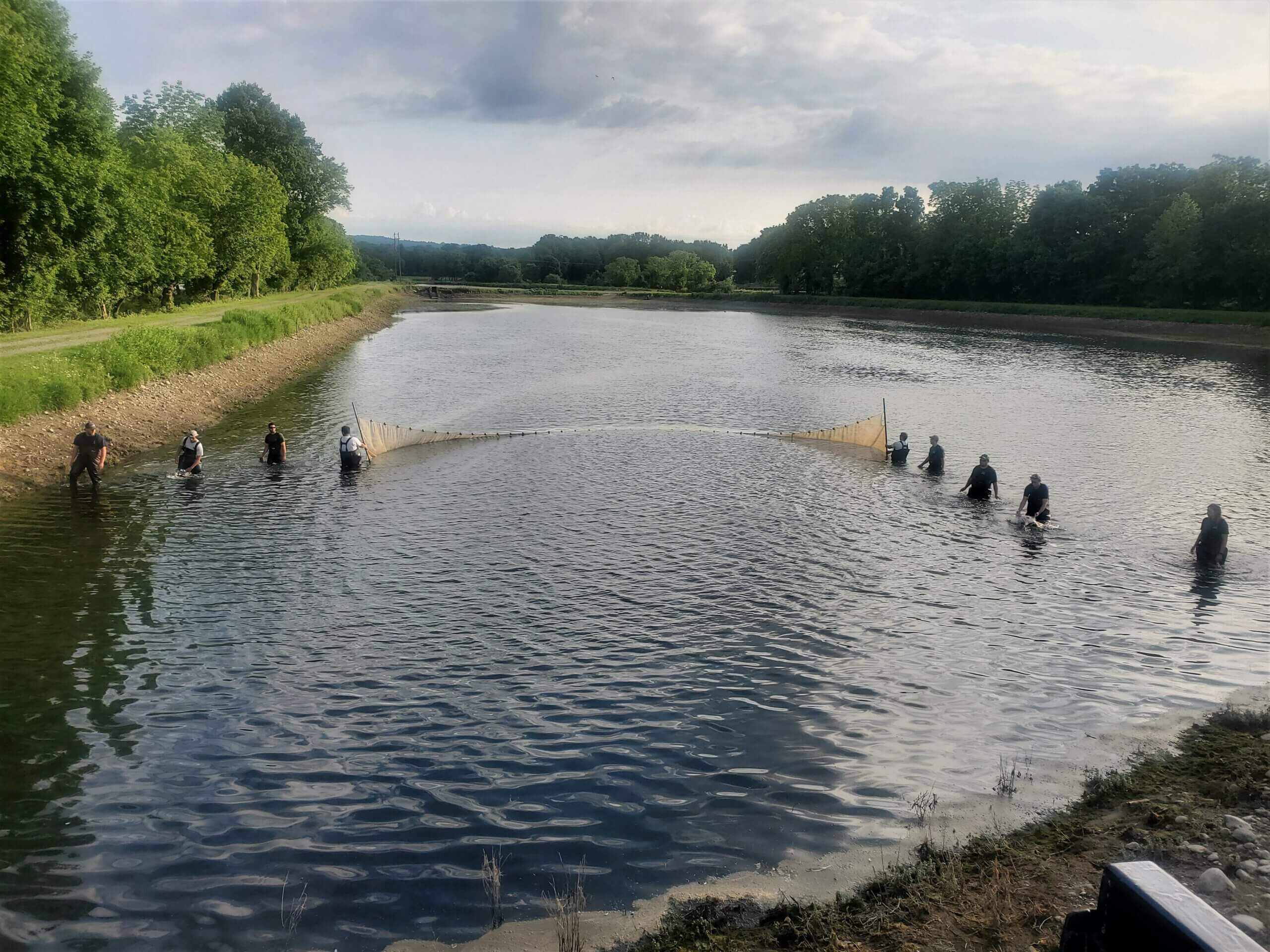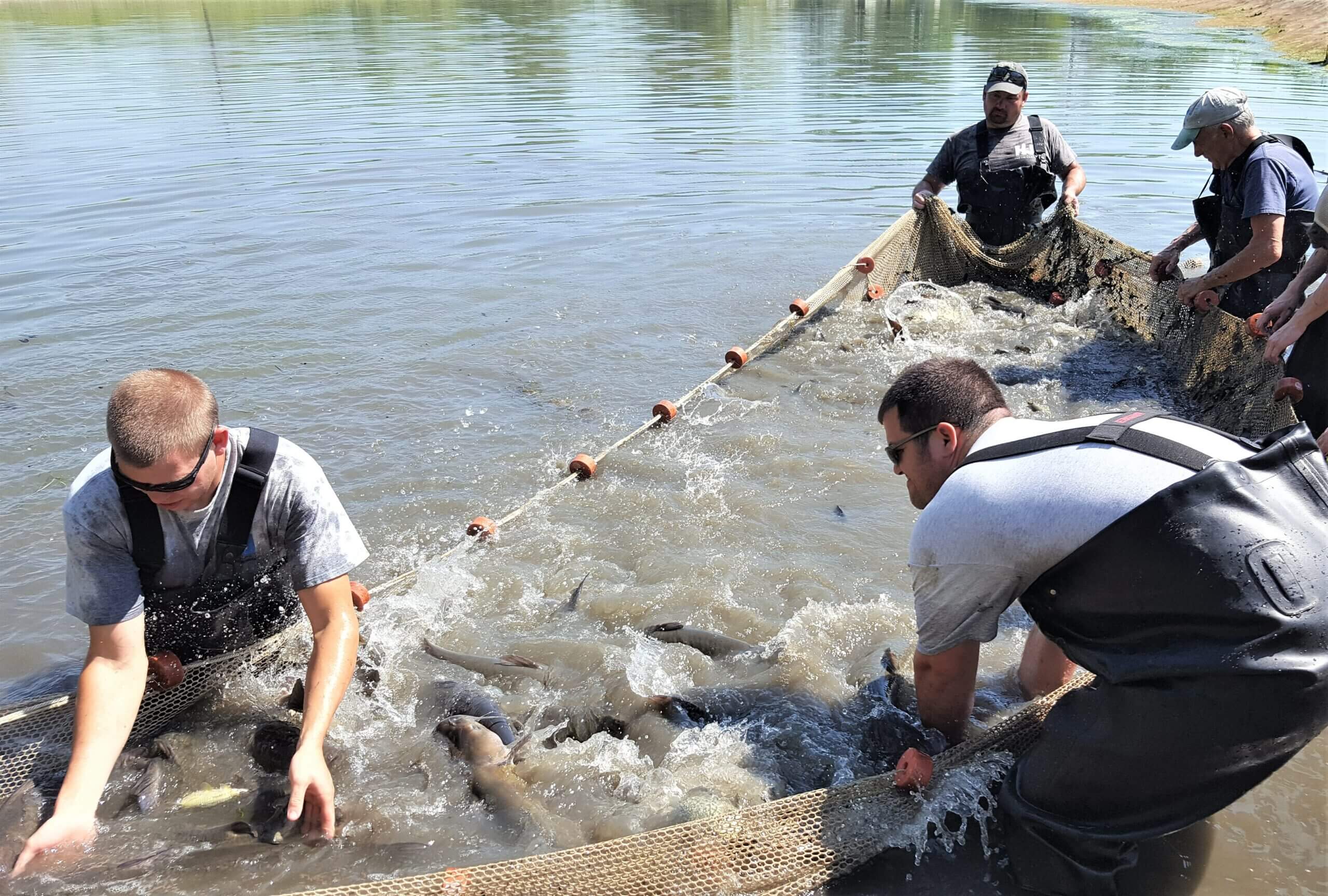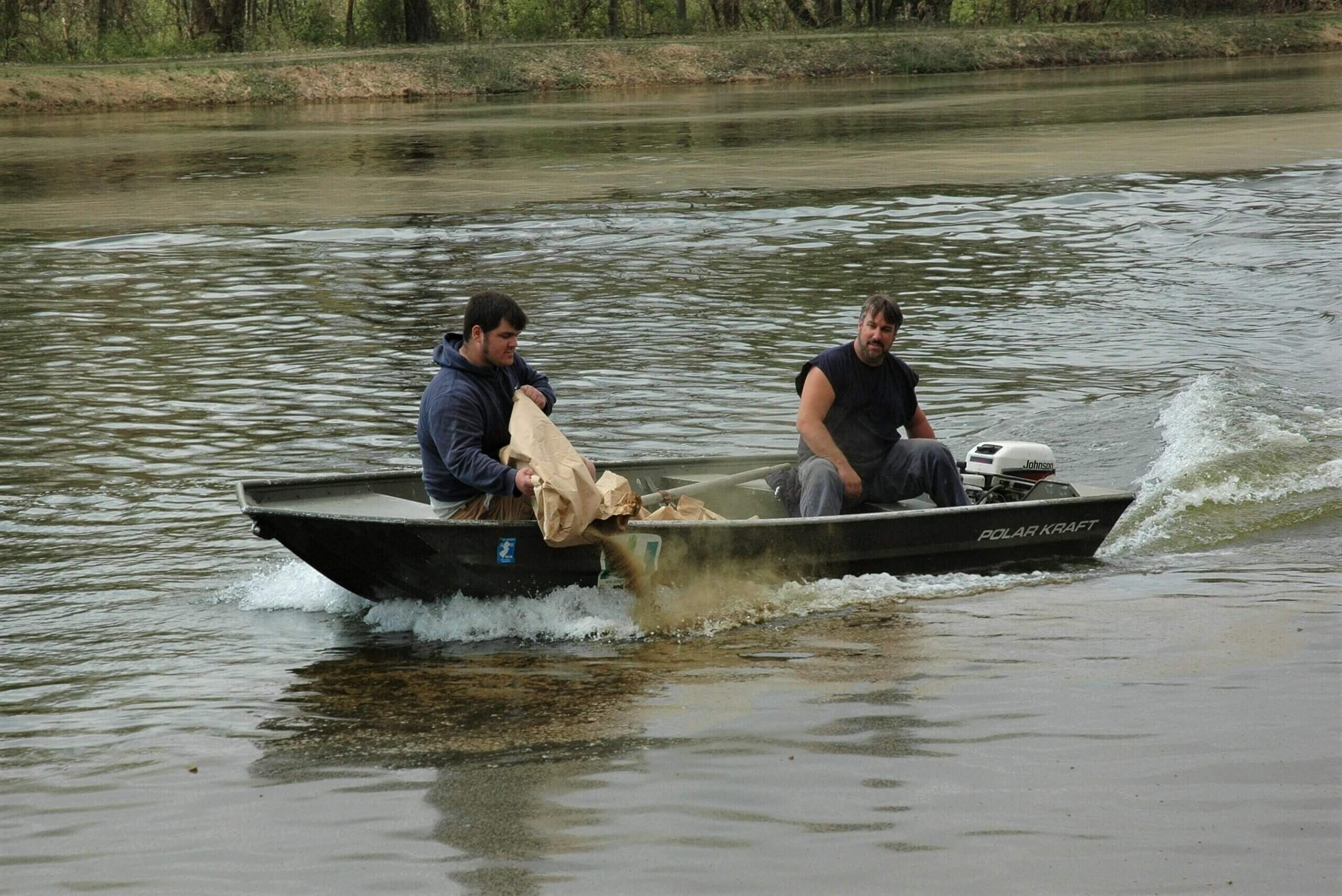During the spring season Hackettstown Hatchery workers are busy filling many of the extensive rearing ponds with spring and brook water. As these ponds are filling, organic fertilizer is pumped or thrown into the ponds to initiate the growth of phytoplankton (microscopic plants) to create a food source for the incoming fry. Fry are introduced to the fertilized ponds between one and two weeks after hatching.
Plankton blooms and dissolved oxygen readings are monitored on a daily basis. Pond fertilization using pulverized alfalfa is maintained to produce a steady food supply for the growing fish. The growing food supply is made up of zooplankton (microscopic animals).
Approximately 40 to 50 days after the fry are placed in the ponds the hatchery crew begins shoreline sampling to monitor fish growth and size.
When the fingerlings have reached the size regional biologists have requested (some species, such as muskellunge and walleye, will require additional feed such as fathead minnows) the ponds will begin to be drained. As the pond’s water level drops the hatchery workers don their chest waders and remove excess algae and weeds with pitchforks to provide a clear netting area.
Once a clear netting area has been established seining (netting) will commence. Depending on fish size and pond width, seines of various sizes (1/8, 1/4 and 1/2-inch mesh) and lengths (25-80 feet) will be chosen. The fish are netted and loaded into a tank truck. The fish are transported to the intensive culture building where they are counted, measured and weighed. They are then placed in holding raceways until stocking.
Annual renovation of hatchery ponds has helped increase fish production. With the help of the state Mosquito Control Commission, Fish and Wildlife’s Bureau of Land Management and hatchery personnel over half of the extensive ponds have been improved. Improvements include the removal of earthen dikes and years of sedimentation to increase pond-rearing space and increase the efficiency of pond harvesting operations.
For more on operations at Hackettstown, see the links on the Hackettstown Hatchery page. For enlarged photos of the images below, click on the image.





 Official Site of The State of New Jersey
Official Site of The State of New Jersey
